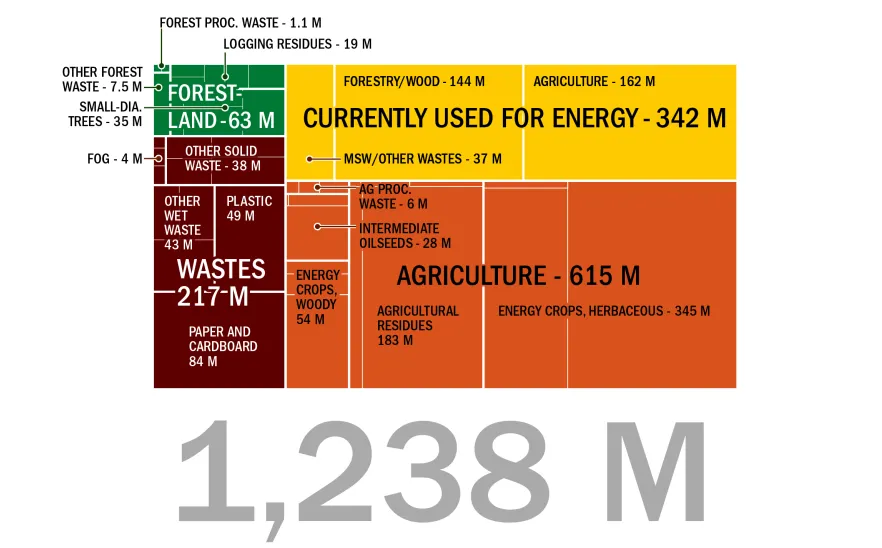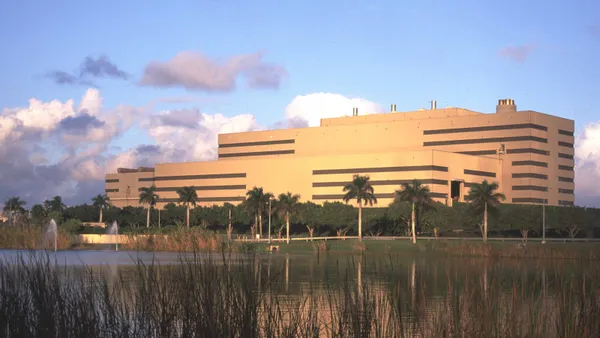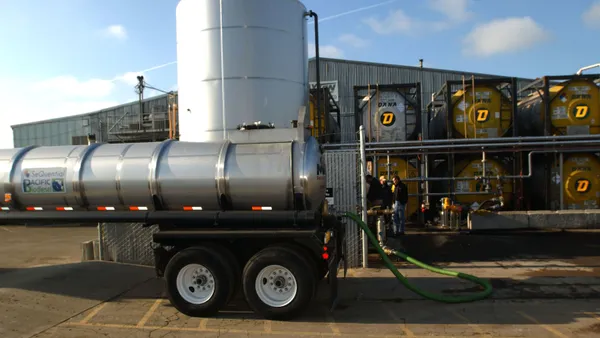Dive Brief:
- A new report from the U.S. Department of Energy analyzing U.S. renewable carbon resources found that the country could use about half of the total waste produced annually for bioenergy in a medium-term market development scenario. The report estimates that in such a scenario, about 217 million dry tons more per year could be used to create bioenergy out of a total 450 million dry tons of waste produced annually. Currently about 37 million dry tons are used to create bioenergy annually.
- The report notes that portions of the waste sector have already become commoditized, as with paper, paperboard and plastics, and thus have a more readily understandable value in the context of the broader biomass market. Waste products are also concentrated in population centers, making their transport to facilities that can process biomass more straightforward.
- But the report notes that commiditizing other wastes, like yard waste, could introduce a complicated pricing dynamic where demand for the material shifts it from something viewed as a liability by companies today into an asset to sell, thus increasing the price.
Dive Insight:
The 2023 Billion-Ton Report is the fourth such assessment and was released by the DOE's Bioenergy Technologies Office. The series of reports, first developed in collaboration with the U.S. Department of Agriculture in 2005, estimates the availability of potential biomass resources and practices that can capture their value. The last report in this series was released in 2016.
The 2023 report found that there's 1.1 to 1.5 billion tons of annual biomass production potential in the U.S. if all relevant resources are developed into mature markets. Those materials could cover about 15% of the country's energy needs in the future. Newly developed energy from waste facilities, including anaerobic digesters, would be responsible for about a fifth of that potential, or about 217 million dry short tons. That projection takes into account several factors, including population growth influencing MSW streams over the next 20 years.

In an executive summary, the report's authors note that bioenergy currently constitutes about 5% of energy produced in the U.S. today. They say demand for biofuels is rising, particularly in hard-to-decarbonize applications in the aviation, marine and rail sectors.
They also note the Biden administration has set bold goals to decarbonize those sectors, including the Sustainable Aviation Fuel Grand Challenge, which sets a target of developing 35 billion gallons of SAF per year by 2050.
"Such targets raise the question: Does the United States have sufficient biomass supplies, within a practical range of environmental, economic, and resource constraints, to fill these needs? The answer is yes, provided adequate markets can be established, and that environmental safeguards are established to ensure sustainable outcomes," the authors note.
The report also found significant "low-hanging fruit" in terms of resources that could be developed in the next 10 years into a supply for bioenergy. Those resources, which include currently landfilled waste, agricultural residues and timberland resources, could provide about 350 million tons per year of biomass, according to the report.
Within the waste category, the report found that the greatest amount of near-term available resources, measured in dry tons, came from solid waste, with wet waste and gaseous resources and intermediates representing additional potential. It estimates 129 million dry tons of solid waste available per year, about half of which is paper and cardboard, 40.8 million dry tons is plastics, 10 million dry tons is textile material, with remaining solid waste including clean urban wood, rubber and leather and yard trimmings.
The wet waste subcategory has 32 million dry tons available per year. About half of that is animal manure, while 8.8 million dry tons is food waste and 6.9 million dry tons is wastewater sludge. Animal fats, used cooking oil and trap grease provide additional opportunities in the category.
The 2023 update to the report does note constraints added to the analysis, including measures designed to safeguard sustainable growth like responsible agricultural land use and timberland management. The authors caution that projected supply only includes the material that's accessible under sustainability constraints, and that deviating from those conditions could result in harmful environmental effects.














